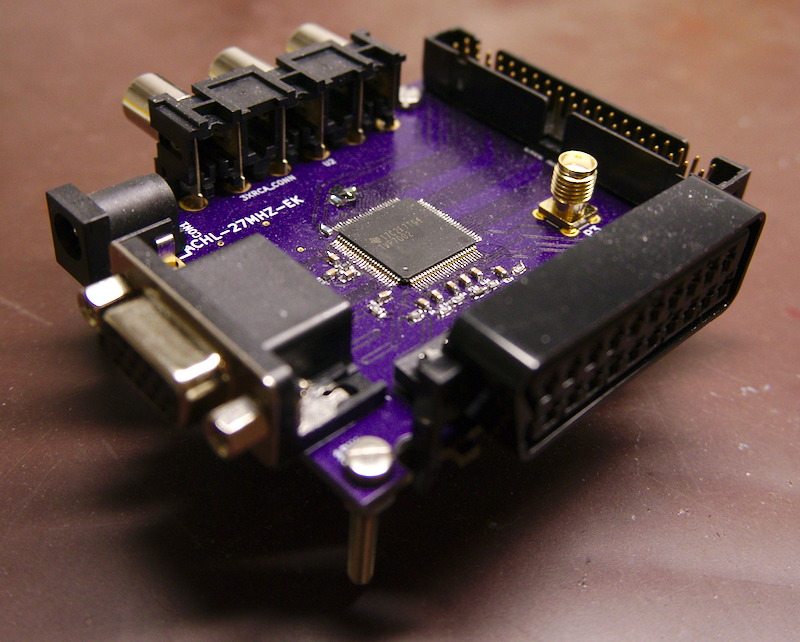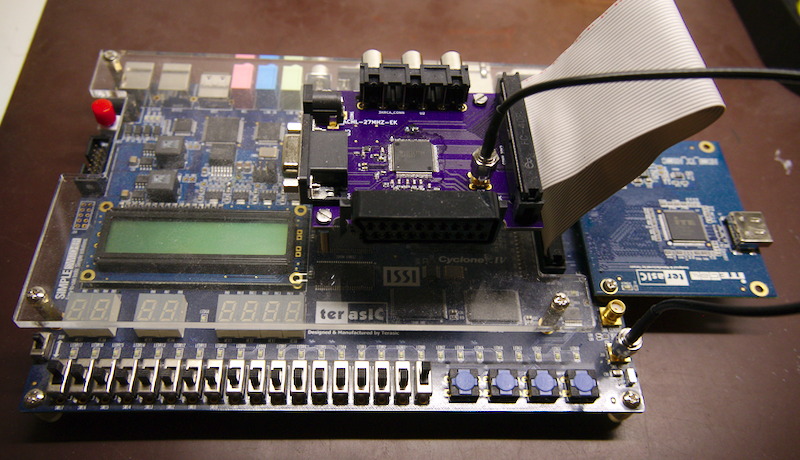Hi!
Since the spring, I've used some of my spare time to design a gamer-friendly video digitizer & scandoubler -system. One may wonder why, as there some pretty good commercial ones available which are more or less suitable for retro gaming. I'm mostly doing this for fun and to see how good results it's possible to pull out with a DIY system.
Anyway, the main parts of the system are video digitizer IC, FPGA and HDMI transmitter IC. My first prototype is a PCB with input video connectors and the video digitizer IC. The PCB (shown below) is connected to a FPGA development board, which contains logic for video processing and scandoubling, and a HDMI transmitter daughter card for video output. The next step would be to integrate the FPGA and HDMI TX chips to the same PCB, which would make it a standalone system.


The features of the current system include:
- -digitizes&scandoubles 240p/480i to 480p, 288p/576i to 576p, and digitizes 480p and higher
-very low latency (less than 2 scanlines)
-single-field "deinterlace" for interlaced modes - a fast method which looks okay
-quick 240p<->480i switching
-multiple inputs supporting various formats- -RGBS via SCART connector
-RGBHV/RGBS via VGA connector
-YPbPr/RGsB via 3xRCA connector
-full-range RGB output through HDMI
-optional scanlines
-configurable horizontal sample rate (only limited by display support) - -RGBS via SCART connector
Below is a link to a video which shows the system in action. I used Chrono Cross as test game, as it contains lots of 240p<->480i switching and uses "field 1"-signaling with 240p (confuses many video processors):
Testing with PSX
 | My games -
| My games -